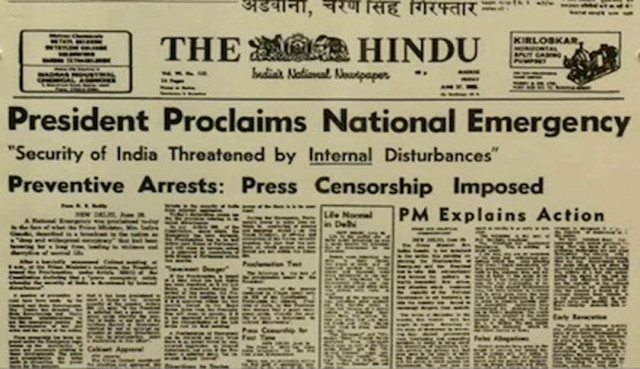Miss America now has a different complexion. Syracuse-born Indian-American Nina Davuluri was crowned with the coveted diamond tiara on Monday, marking the first time a member of the South Asian Diaspora has won the title. Her victory, which has been both praised and criticized, should be put into context. Davuluri is the poster-child for a model of South Asian femininity which is troubling.
There have been several articles highlighting some of the racist responses to Davuluri’s win on social media, however, such an offensive array can conceivably be assembled for any event. They shouldn’t be seen as a wider response from Americans about this topic. Social media comes with a caveat: people who want to do things like insult Davuluri with ties to Arabs, Islam, Al Qaeda, the “Egyptian dance” she performed, and so on, have the ability to do it. But they shouldn’t be presented as serious politics through articles that publish a series of Tweets and Facebook posts.
Internet posts that do this make the mistake of overstating certain viewpoints. The reality is very simple: most Americans don’t really care who wins this competition. There is a clear majority of people who are either supportive of Davuluri, or apathetic about her. Other people are just idiots who should be brushed off. Instead of engaging with them, I think our energies are best spent on discussing how Davuluri illuminates the unique cultural pressures on young, middle-class South Asian women.
At the core, Miss America has always been about mindless repetition. Frederick Hickman, an Atlantic City business leader, started the pageant in 1921, mostly as a promotional gimmick. However, he also pretended that his intentions were more romantic, stating that “Miss America represents the highest ideals. She is a real combination of beauty, grace, and intelligence, artistic and refined. She is a type which the American Girl might well emulate.” In other words, the Miss America pageant has always been about “girls” emulating particular standards of beauty, and behavior, which are essentially determined by market forces. The competition is essentially a question of who is the best congealment of these abstract qualities.
Davuluri is being touted as a new step in the competition towards diversity in these qualities, but personally, I read her ‘uniqueness’ as superficial individuality in an constrictive mold. Can we really talk about her representing diverse beauty standards, when the selection process of Miss America contains a bikini competition that privileges very specific aesthetic qualities, regardless of skin tone and heritage? How much has changed here, with this latest “first” in the history of an American minority which has increasingly become a safe source of token diversity? Still though, I’m still happy about it, since change is frequently miniscule and imperfect.
But there is still a question of her as a model for reproduction, especially for South Asian women in the US. What are they specifically expected to restate in themselves, with her as an exemplar? It seems fine objectively: Davuluri was an academically distinguished student at the University of Michigan, and wants to join the numerous doctors in her family. She has made significant efforts to be proud of her Telugu heritage, regularly watching Tollywood movies, and having become a trained danseuse. She also happens to be a beauty queen who has a darker complexion, which flies in the face of a massive skin whitening industry, and probably the standards of most South Asian pageants.
The problem for me is that this sounds like exactly the type of prototype bride that Diasporic South Asian women are expected to become. It is another articulation of a particular definition of femininity that has a violent effect on our communities.

Middle class South Asians expect a mixture of professional success, and cultural traditionalism, from their model daughters. They are expected to be high-achievers in STEM fields, just as much as they are able to cook excellent dal and make a tasty cup of chai. I suspect that much of this is tied to how specific careers (doctor, lawyer, engineer) have disproportionately allowed South Asians their class superiority in the Diaspora. This means that the ideal bride needs to be as much of an affluent professional, as she is graceful, poised, and adequately “non-Western” in a way that is basically just a code for “normative.”
And part of this framework are twentysomething women like Davuluri, who seem to be able to meet every expectation. We have all grown up with exemplars like this. They are excellent at presenting themselves to our parents, and the community in general, which is what makes them perfect for a pageant setting. When I see Davuluri, a beautiful South Asian woman, who is intelligent and poised in exactly the right way, I hear aunties wondering aloud, “Why can’t my son meet a girl like that?” or “Why can’t my daughter be like her?”
I also hear women in our community putting a worrying amount of effort into mechanisms by which they can measure up: endlessly studying for a program like medicine without knowing exactly why, hours of primping before every community event because who knows what the aunties will say, tirelessly attempting to nail cooking recipes because the in-laws will expect it. We all remember how women like Davuluri, who seem to be able to do it all, added to these pressures. It isn’t even always their fault, as much of the drive is culturally-conditioned.
Crowning a “perfect” middle class, Diasporic, South Asian like Davuluri as Miss America only serves to state these trends on a larger scale. The competition’s regal pretenses are the perfect complement to the role that women like her already play in our community. Despite its positive aspects, her victory bolsters a social force that dictates a particular model which South Asian women are expected to emulate (and only lines up with their own preferences by luck.) Success is ultimately gauged by marriageability, with a flurry of rishtas (“proposals”) to be expected after this more-or-less commanded model is obeyed in a compelling way.
Women like Davuluri have always had an enviable ability to meet this system’s demands to the letter. Their skill is almost dangerous, as the presentation can make the abstract prototype seem misleadingly human. That is exactly what is most damaging, because that deceptive humanity is just that: fake. It’s a performance, no matter how real it seems based on the person doing it. And at closer examination, it is essentially Hickman’s vision of “the highest ideals.”
With a chutney twist.
Photograph courtesy of epSos.de and kaybee07. Published under a Creative Commons License.





